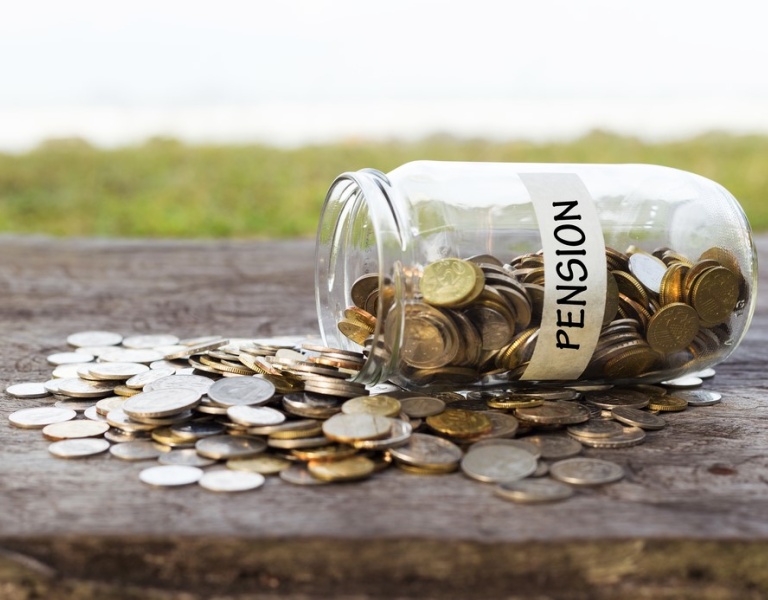Saving for your pension and saving the environment, what do they have in common?

The Irish government recently published a document outlining their proposed design for an Automatic Enrolment Retirement Savings System. Under the new system, it is proposed that private sector workers with no pension provision will be automatically enrolled into a new Government-backed scheme to help them save for their retirement. This means that the default is changing from the current status quo where people have to actively choose to opt-in to a pension, to a system that will mean that people will be auto-enrolled by default and need to actively choose to opt-out if they don't want to save towards their pension as part of the scheme.
Impact of changing default on Pension auto-enrolment in the UK
Looking across the water to the UK, who introduced pension auto-enrolment in 2012, changing the default appears to have been extremely effective in increasing pension coverage. Pension coverage in the private sector increased from 42% to 81% from 2012 to 2017. Changing the default, so that people are auto-enrolled automatically into saving for their pension, has meant that even when people make no decision at all, more people will now have access to a respectable pension when they retire.
But what does this have to do with energy policy? Why am I writing about pension auto-enrolment on an energy blog? Because, there is much for energy policymakers to learn from pension auto-enrolment.
What Energy Policymakers can learn from pension auto-enrolment
Energy policymakers spend a lot of time thinking about how to encourage people to make more sustainable decisions. But what if people don't make a decision? What if they simply continue with the status quo? Shouldn't we design the status quo to be as sustainable as possible?
Changing default options
The default option, the option people receive if they don't make an active decision, can have a large impact on people's energy behaviour.
In California, researchers working with a major energy utility, randomly assigned electricity customers to either be automatically enrolled in a time of use tariff or to simply receive communications to encourage them to actively opt-in to adopting time of use tariffs.
Among the group who were simply encouraged to actively opt-in to time of use tariffs, 20% of customers chose to actively opt-in to a time of use tariff. On average, customers that actively opted-in reduced their energy use at peak-times by 5.9%.
But what about the customers that didn't make a decision, who were automatically signed up to a time of use tariff? Would they reduce their electricity use at peak times by the same amount given that they didn't make the active choice to opt-in? No, they only reduced their use at peak times by 2% on average. However, among the customers who were automatically enrolled, only 2% decided to opt-out. This meant that 98% of those automatically enrolled in the time of use tariff stayed on the tariff and changed their behaviour.
This has an important implication for the overall effectiveness of the time of use tariff program. Clearly, 98% of customers reducing their energy use by 2% at peak times creates a larger demand shift than 20% of customers reducing their peak use by 5.9%. Changing defaults can increase program participation, greatly increasing the impact of a policy program.
Changing the defaults option has also been shown to be effective in encouraging people to choose a green electricity provider. An experiment by Pichert and Katsikopolous (2008) observed people making their choice of energy provider. Participants in the experiment were randomly assigned to a group where the default was a green energy provider or where the default was a typical 'grey' electricity provider.
More people chose the green energy provider when it was the default option. Many more. 94% remained on the green energy tariff when defaulted onto it. In contrast, only 1% of the population had actively opted-in to green energy tariffs at the time of the study, despite the fact that many people reported that they would be happy to switch to a green tariff and pay a premium for it. Such defaults could be used by communities who want to encourage use of local energy generation to increase the number of people in the area buying their electricity from local clean renewable sources while still preserving people's choice to opt-out and choose a different energy provider if they wish.
Impact on energy related behaviours
There are a large number of studies showing that setting green defaults can be effective in changing a number of energy related behaviours. Irish energy policymakers, energy regulators, and energy efficiency advocates should take advantage of the many remaining opportunities to use green defaults to help Ireland achieves its carbon emission reduction targets.
Ireland's introduction of time of use tariffs
In late 2020 or early 2021 the Commission for the Regulation of Utilities will allow energy utilities to provide time of use tariffs to customers in Ireland. Time-of-use tariffs will be similar to day-night meters, in the sense that electricity will costs different amounts depending on the time of day it is used. The Commission for the Regulation of Utilities have previously announced (CRU19019) that at some point in the future, direct electricity suppliers may be directed to remove flat-rate tariffs from the market meaning that electricity customers would be defaulted onto a standard time-of-use tariff. Given that previous evidence has shown that it is unlikely that the transition to time-of-use tariffs will be customer led, serious consideration should be given as to when time-of-use tariffs should become the default in order to shift peak demand. It is also important to think about what default tariff consumers might be enrolled onto. The default tariff should be designed to minimise potential consumer detriment while maximising the potential energy savings.
Switching to green defaults
There are other areas where switching to green defaults would likely produce large energy savings. Manufacturers could change the default standby settings on new consumer appliances, or the default temperature setting on thermostats, which could produce large energy savings with minimal effort and at a low cost. Large organisations could choose to set a default policy that all meetings are attended by video link and that special permission would be required to attend external meetings in person. In fact, the All of Government Climate Action Plan already calls for public bodies to make the digitisation of paper-based processes the default approach.
Defaults are powerful. They can guide choice while allowing people/organisations the flexibility to make their own decisions. We should think carefully about the default options that exist across all areas of energy policy and set default options that will deliver the greatest carbon savings.
Footnote: The ethics of using default options to encourage behaviour change has been discussed widely in the behavioural economics literature and should always be considered before implementing any change to a default setting. For discussions of these issues, see Sunstein (2016) and Sunstein (2015).

